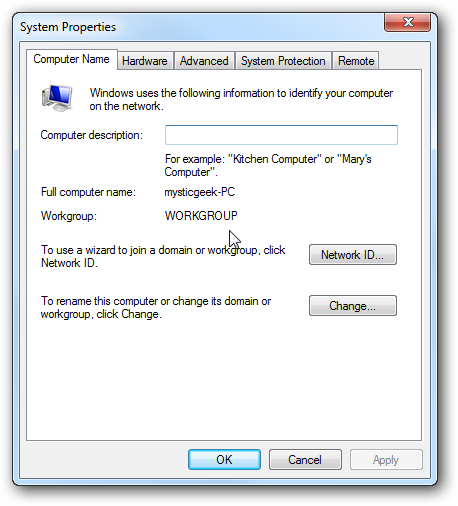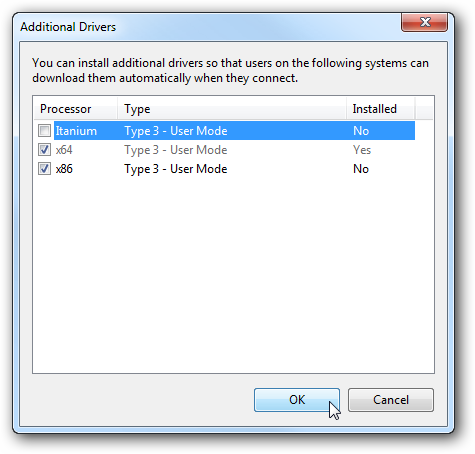XP and Vista Networking within a Home Network
Many
critics of Microsoft products have thru the years have blamed those
products with a lack of security, and sometimes rightly so. Microsoft
does everything possible to lock down those products and everyone starts
complaining this it is now “broken”.
Well, it is not broken but
there a couple of issues you need to resolve and configure to make these
two systems “talk” to one another. By “talking” to one another, we mean
sharing resources across your home network. Resources could be
anything from music files, pictures, or even a printer. In this
section, show you the new settings within Vista you need to consider and
configure. Vista sees two types of networks, Public and Private.
Navigate
to the Network and Sharing Center and take a look at the new features.
You will see you connection to the internet and whether it is designated
as Private or Public. This would have been determined at the time you
made you connection to the internet. For the moment, let’s deal with a
private network, which is your network at home. You must have a
"Private" network in order to share files within your home environment.

Hit "Customize" on the right side of the panel to make any needed changes.
What we want is a "Private Network" with any name you deisre to identify your network.
Choose Private and complete the wizard.
By
default, Public File Sharing will de disabled. We have been talking
about a Public folder so just where is it located? Go to the C
Drive>Users>Public and within there you will see the “Public
Folders”.
Among
these there are folders for Documents, Music, Pictures, etc. At this
point, only users on the local machine have access to this folder as
shown in the graphic below:
Special caveat at this point. These instructions will allow access to
the built in Public Folder from within your local network
Hit the drop down arrow on the right side of the panel and you will be presented with three options:
• Turn on sharing so anyone with network access can open files
• Turn on sharing so anyone with network access can open, change, and create files
• Turn off sharing (people logged onto this machine can still access this folder)
Special Note:
Option #1 menas that users from another machine can "Read' files withn the public folder
Option #2 means that users from another network machin can "Read, Change, abd Create" Files within the public folder
Option #3 only allows access to user logged on to the local machine, i.e., no network access.
You could circumvent this by enabling the Guest Account but this is not encouraged.
Open,
Create, and Change Files are the same as “Modify” within NTFS
permissions. NTFS permissions are an advanced set of permissions used by
operating systems since Windows 2000 was introduced. No access means
just that. The folder is only available to local users on the Vista
machine.
In the graphic below you see a Vista machine named
VMVista connected to the internet from within a Private Network. My
Workgroup name is named “Wills”. Public File Sharing has been turned on
for Network users to “Open, Change, and Create “files. My XP machine
(Dell1705) has a Username “John Wills” and so does the Vista machine. I
can either “map” a drive to the Public Folder or use “Explorer” to use
it.

We
can now get to the Public Folder, but what about if you want to create a
"special" Shared Folder in which you want to restrict access. This
would mean that although a User might have an account on the target
Vista machine, you can deny access to this new folder.Go to the C drive
and create a new folder named “Test”.
Right
click the folder and go to Properties. You will see the Security and
Sharing tabs (in version Home Premium and Ultimate). Hit the Sharing tab
and you are now presented with a couple of options. Look for a button
named Share and hit it and you see the box below:
Continuing
with the example, I have created a new user named "Network User" choose
“Network User” (a local user on my Vista and XP machine) and select
add. Hit the Permission Level and determine the level of access they
need. Hit the Share button and complete the process. In this case,
“Network User” will be given “Reader” access.
Now hit the "Share" button and you will now see the newly created Shared Folder.
This
folder is now accessable from the XP machine on the network by either
mapping a Network Drive or using the "Explorer" Method.
Go to My Computer and in the Explorer URL type:
and you will see the folders accessable to you.
**Note**
Subsituite the correct name of your Vista machine for this example to work for you.
The
owner of the folder (the user who created it) has by default full
access to that folder. Now you can add named users on the network or
something unique named “Everyone”. This is basically the same process
you went thru in the previous example but now you begin to see how the
process works. The “Permissions” that you can give to any user are:
1. Reader (Default)
2. Contributor – this means the user can modify the data
3. Co-Owner – gives the user full access to the entire folder
4. Remove (after action)
Something
to note. “Everyone” means EVERYONE. Anyone who gains or has access to
your network has access to and file or folder with the Everyone
permission. A better plan of action would be to give a specific user the
permissions they need otherwise put data that “Everyone” needs access
to in the Public folder. Beginning to make sense?Continuing
with the example, I have created a new user named "Network User" choose
“Network User” (a local user on my Vista and XP machine) and select
add. Hit the Permission Level and determine the level of access they
need. Hit the Share button and complete the process. In this case,
“Network User” will be given “Reader” access.
At
times this can get confusing but the key to remember is properly
allocate permissions. My examples were created with a "virtual" Vista
machine using VM Ware and the host machine running XPSP2.








 Click the OK button, then click to install it, and then just wait. It’ll
take a while to download, and once it finishes downloading, it’ll force
you to reboot.
Click the OK button, then click to install it, and then just wait. It’ll
take a while to download, and once it finishes downloading, it’ll force
you to reboot. 



































 LibreOffice
LibreOffice Firefox
Firefox
Separate from all that, and the base WINE install, is Picasa; with it's very own container automatically. You don't even have to think about it. However, I have moved it(very custom), and upgraded it to the beta 3.8, with face recognition.